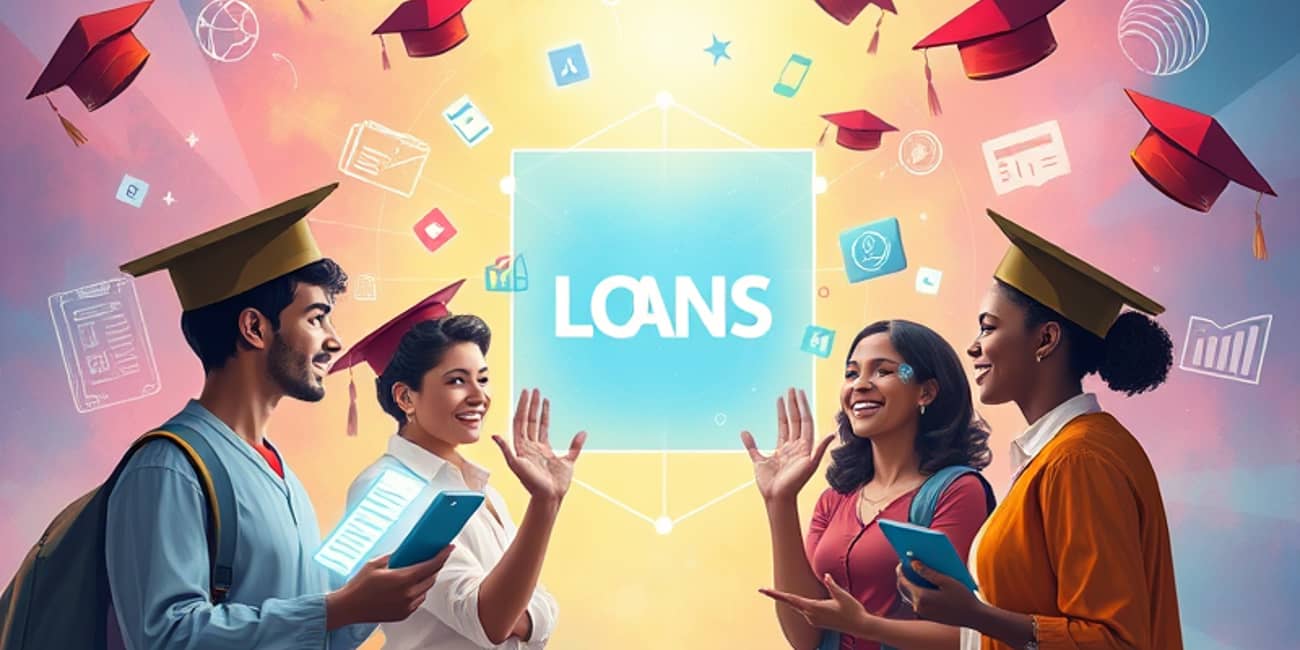In an era where educational expenses keep rising, digital loans have emerged as an essential tool for ambitious learners. By utilizing technology, students can swiftly access financing, conveniently compare different options, and effectively manage their financial futures. This article delves into the present state of student loans, explores innovative solutions, and provides practical strategies to reduce debt while maximizing the return on your educational investment.
Understanding the Current Student Loan Landscape
The United States is facing an unprecedented student debt crisis, with overall student loan balances projected to reach $1.777 trillion by early 2025. After a slight decline in 2023, debt levels began to climb again in 2024, fueled by rising tuition costs and renewed borrowing activity.
Federal loans make up over 92.8% of this debt, while private loans are increasingly contributing to the total figures. The average borrower carries $35,207 in debt, though this figure varies widely depending on factors such as the type of institution, the degree level achieved, and geographic location. As more students turn to digital lending platforms, understanding this backdrop is crucial for making well-informed financial choices.
Exploring Digital Lending Options
Fintech companies and online platforms have revolutionized the way students finance their education. By streamlining the application process and offering real-time comparisons of rates, digital loans provide transparent and accessible solutions that stand in stark contrast to traditional, in-person lending practices.
- Federal loan portals equipped with automated eligibility checks
- Private digital lenders presenting both variable and fixed interest rates
- Income-Share Agreements (ISAs) linking repayment to future earnings
Whether opting for a federal loan with generous deferment options or a private lender offering rapid approvals, it is vital to compare interest rates, associated fees, and repayment flexibility before making a commitment.
Tackling Repayment Challenges Head-On
Repayment remains one of the most significant challenges faced by graduates. As of February 2025, 20.5% of borrowers are more than 90 days delinquent, a significant rise from the pre-pandemic rate of 11.5%. Subprime borrowers face even greater difficulties, with serious delinquency rates exceeding 50%.
Moreover, the Department of Education resumed collections on defaulted federal loans in May 2025, underscoring the importance of proactive repayment strategies. By creating a realistic budget and considering deferment or forbearance options, borrowers can take control of their financial future and avert the long-term consequences of credit damage.
Building Essential Financial Literacy
One of the most powerful tools at your disposal is comprehensive financial education. Grasping crucial concepts such as compound interest, the time value of money, and effective budgeting can significantly reduce the overall cost of borrowing.
Many educational institutions and nonprofit organizations are increasingly incorporating financial literacy into their orientation programs and curricula. By acquiring skills in financial planning and credit management, students can make more informed choices that will serve them well beyond graduation.
Strategies for Minimizing Debt Before You Borrow
Borrowing should be viewed as a last resort, not the first option. Implement these strategies to keep debt manageable and align your loans with your career goals:
- Pursue scholarships and grants to lessen tuition and living expenses
- Choose subsidized federal loans over unsubsidized ones whenever feasible
- Assess the return on investment for each program you are considering
- Create a thorough budget and repayment schedule prior to signing any agreements
By planning strategically and exploring alternative funding sources, you can significantly reduce the necessity for high-interest debt and ensure a more favorable financial outlook.
Innovations and Future Trends in Education Financing
As tuition rates continue to rise, digital lenders are exploring new models to share both risks and rewards. Income-Share Agreements are becoming increasingly popular, allowing students to repay a percentage of their future earnings rather than adhering to fixed interest rates. Additionally, crowdfunding platforms are emerging, enabling communities of supporters to invest in promising students.
On the legislative front, lawmakers are considering reforms aimed at making federal repayment plans more adaptable and forgiving. Proposed changes include capping monthly payments at a percentage of discretionary income and offering partial loan forgiveness after a designated number of years in qualifying public service roles.
Case Study: A Roadmap to Success
Consider the example of Sarah, a first-generation college student pursuing a degree in computer science. Faced with escalating tuition costs and limited family support, she approached her education financing with a strategic mindset:
Initially, Sarah researched scholarships specifically targeting STEM majors, successfully securing $8,000 in awards. She then compared both federal and private digital loan options, ultimately selecting a subsidized federal loan due to its lower interest rate and flexible repayment conditions.
Sarah utilized online budgeting tools to forecast her monthly expenses and enrolled in an income-driven repayment plan, ensuring that her payments would remain manageable after graduation. She also committed time to attending free financial literacy workshops, learning to track her spending and establish an emergency savings fund.
Today, Sarah graduates with less than $20,000 in debt, a clear plan to pay off her balance within five years, and a job offer from a leading tech company. Her proactive approach illustrates how intentional borrowing decisions and the use of digital tools can convert a daunting financial journey into a sustainable investment in one’s future.
Digital loans for education represent more than just a funding mechanism; they embody empowerment through accessible finance. By understanding the current landscape, embracing innovative solutions, and prioritizing financial literacy, students can confidently navigate the complexities of borrowing.
Your educational goals deserve a strong financial foundation. As you explore loan options, remember that informed choices made today will shape your opportunities tomorrow. Invest wisely, plan diligently, and watch as your educational and professional aspirations come to fruition.



